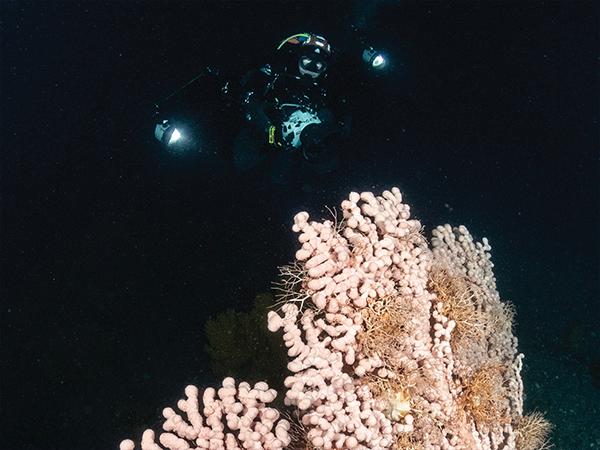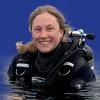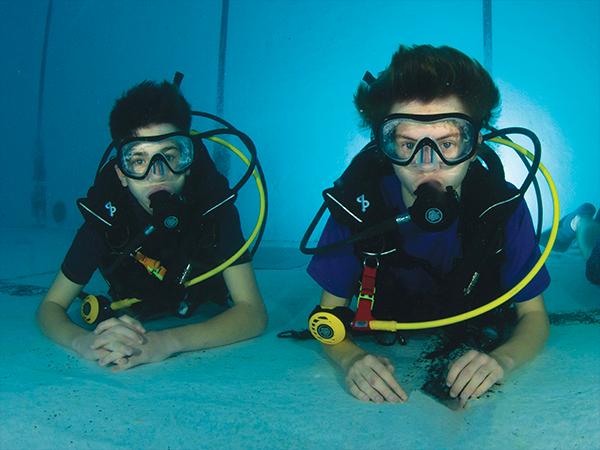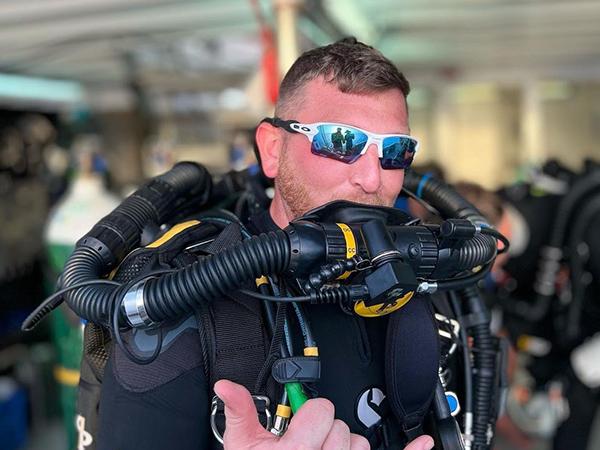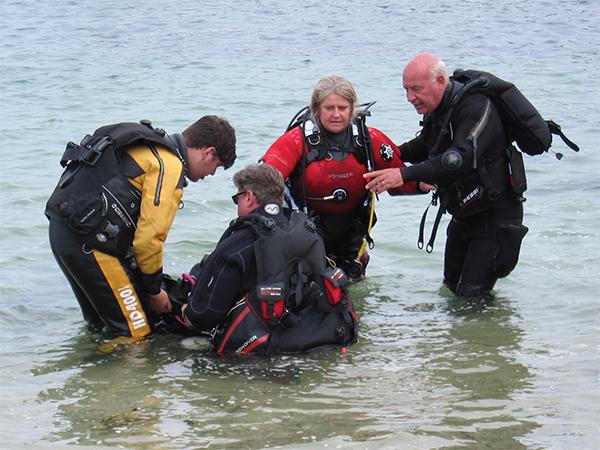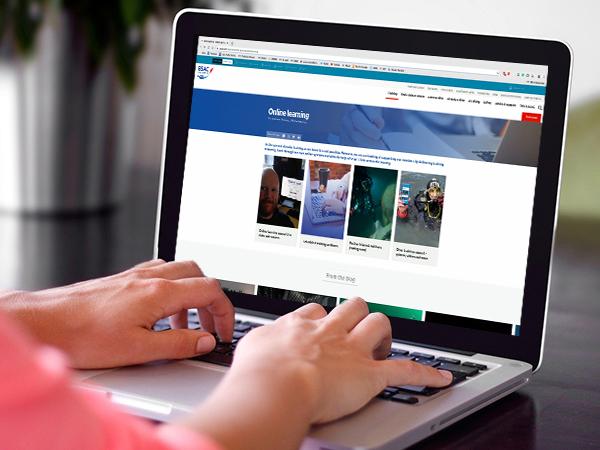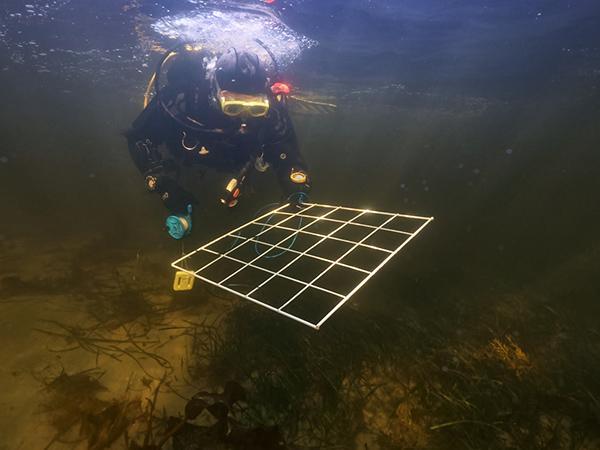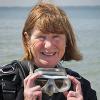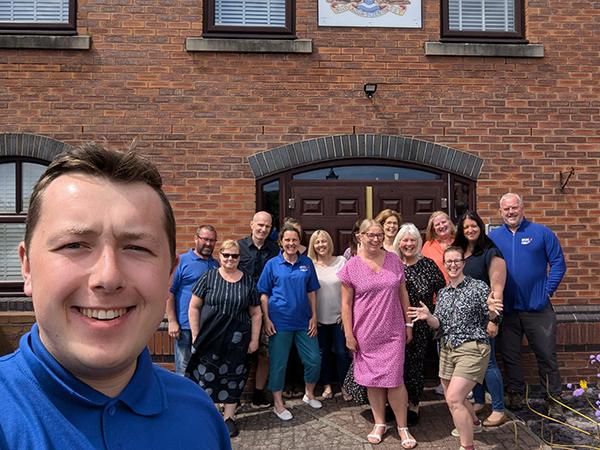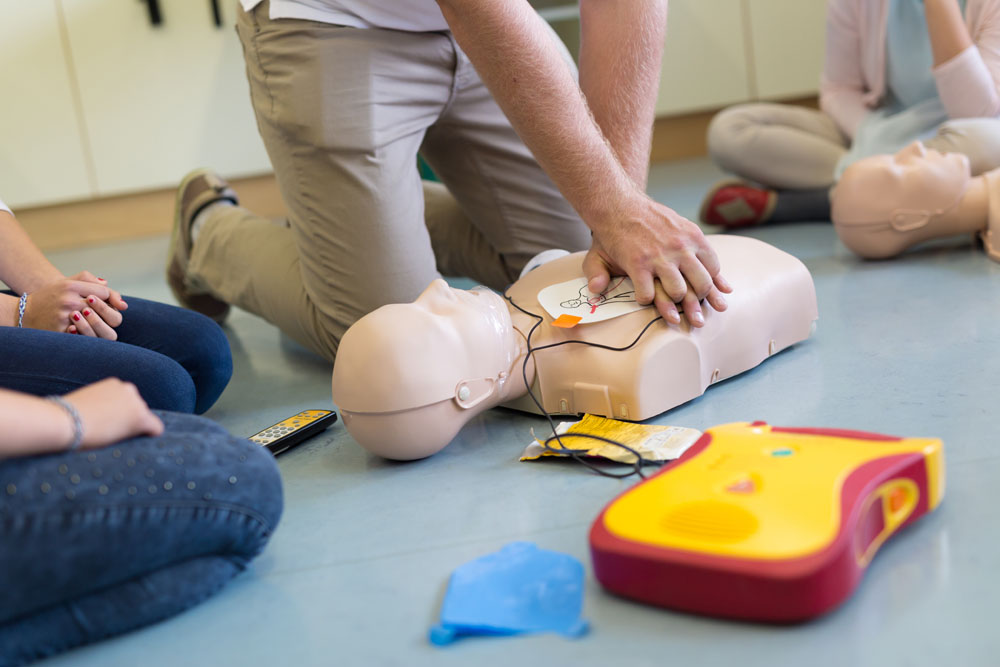
The aim of the course is to give you a basic understanding and awareness of an automated external defibrillator (AED). The course should take you around 30 minutes and is for anyone who has no AED training experience. It will explain what you need to know and give you an understanding of training AED availability. This is an awareness course only – we recommend you attend a full theory and practical AED course.
Module contents
This module looks at basic AED awareness
It covers the following topics:
- What is a defibrillator?
- The heart and how it works
- When should a defibrillator be used?
- How does a defibrillator work?
- Success rate
- How can I get hold of either a training AED or a real one?
What is a defibrillator?
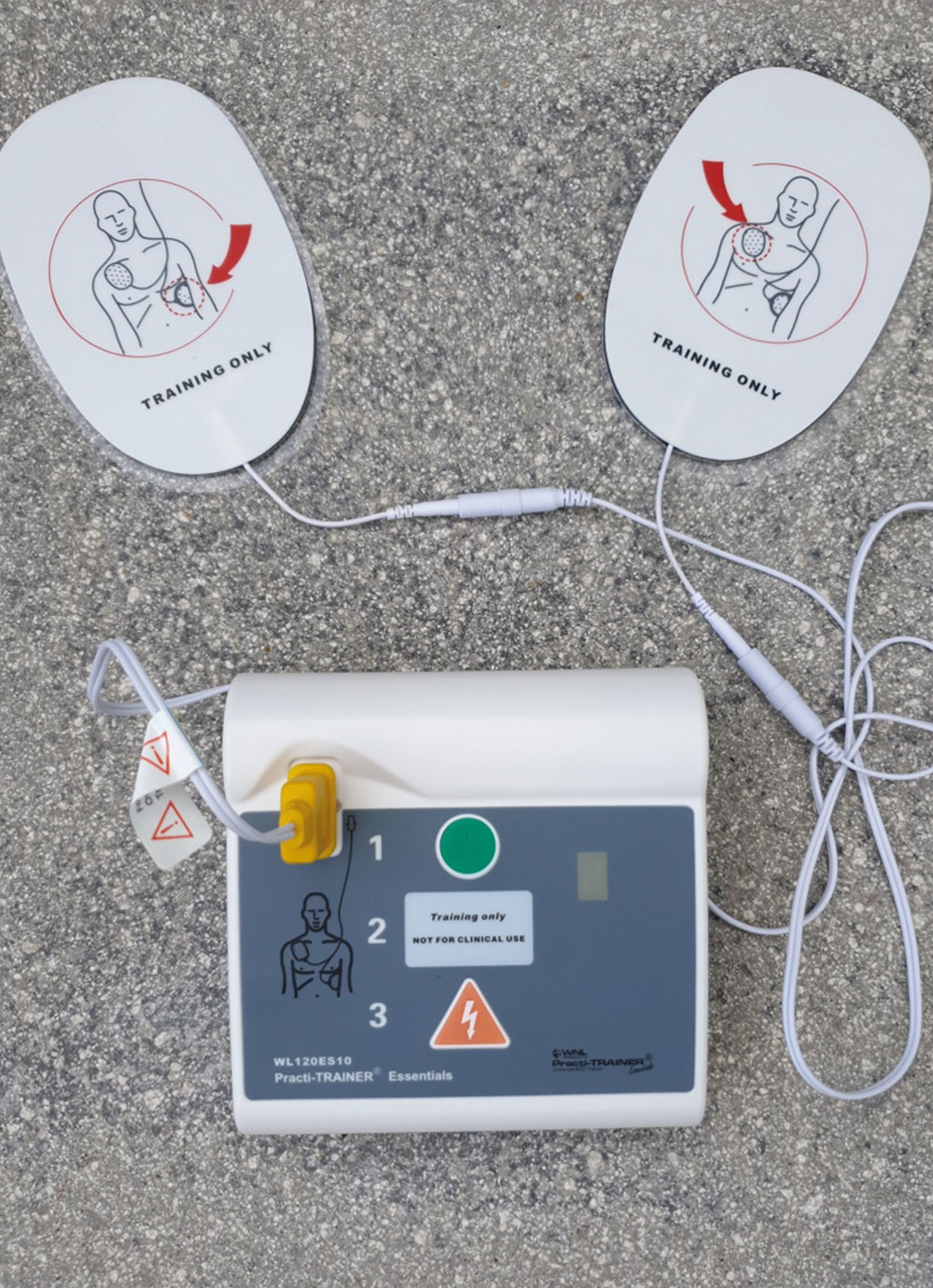
Functions
A defibrillator sends a high energy shock which goes through the heart. The shock is called defibrillation. Its main aim is to return the heart to a normal rhythm.
The heart pump cycle
The heart is primarily a muscle to pump blood. It has four chambers with muscular walls: 2 atria and 2 ventricles connected by valves to control the flow of blood. Energy is supplied to the muscle of the heart via three major coronary arteries carrying blood around the outside of the heart.
The system
The right side of the heart receives de-oxygenated blood from the body and pumps it through the pulmonary artery to the lungs. From there the blood picks up fresh oxygen and gives off carbon dioxide across the membranes of the alveoli. The resulting oxygenated “red” blood then travels from the lungs to the left side of the heart from where it is pumped through the aorta to the body, brain and other vital organs including the heart muscle itself.
The chambers contract and relax in an organised sequence. Without this organised sequence of muscular contractions the heart pump is ineffective. Blood enters the atria, and then passes through valves to the ventricles. It then leaves the heart to the lungs from the right side and to the rest of the body from the left side.
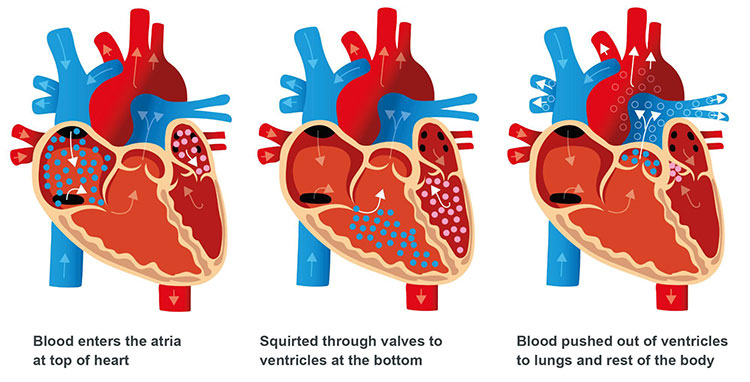
Because heart structure contracts in an organised sequence this create the pump which circulates the blood around our bodies.
All by electrical control called the pacemaker
Electrical control of the heart
Pacemaker

The pumping action is controlled by a system of electrical connections causing the normal heart to contract in an organised sequence. The initiation of the heart contraction is controlled from a “pacemaker” area in the right atrium. This area is called the “Sinus Node”.
Conduction fibres
Electrical signals from the pacemaker are sent to the ventricles through specialised fibres to initiate ventricular contraction after the atria have contracted.
When the heart beat is being controlled from the pacemaker area and conducted in this way, the heart is said to be in “sinus rhythm” because the rhythm is being generated by the Sinus Node (nothing to do with the sinuses in the skull). The electrical activity of the heart can be recorded on an Electrocardiogram (ECG) machine, which shows a characteristic organised trace.
Normal rhythm
Normal ‘sinus’ heart rhythm
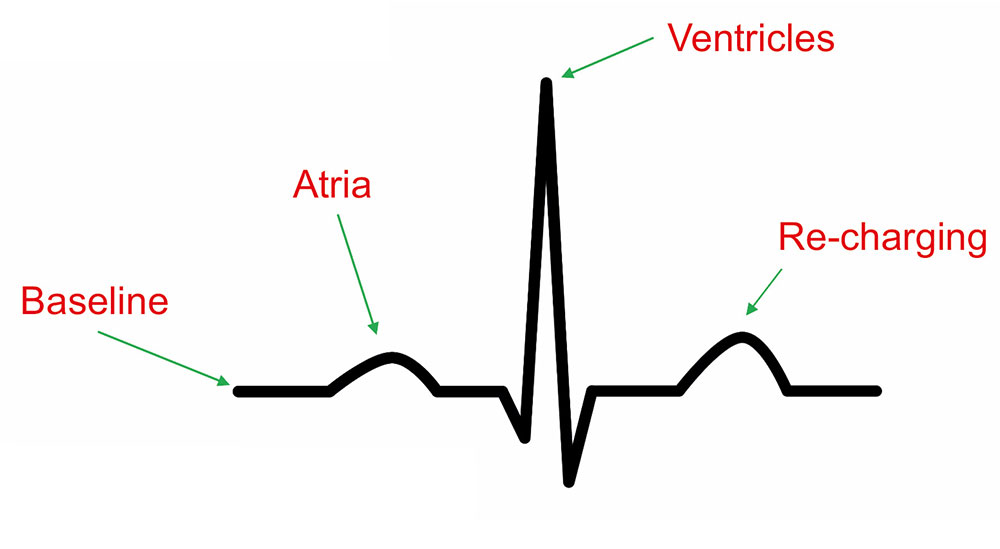
The picture above shows the normal electrical activity when seen on a cardiac monitor. The first upward dome is the atria contracting. The next upward spike is the ventricles contracting and the last upward dome is the heart recharging itself.
The picture below shows the heart working normally with the spikes and domes arranged around the level baseline.

Ventricular fibrillation (VF)
Uncontrolled electrical activity in ventricles
In cases of certain illnesses or injuries, the heart rhythm may not be controlled by the “pacemaker” in the sinus node. Some of these abnormal rhythms may be potentially life threatening. The most significant of these occurs when the ventricular muscles generate their own electrical activity throughout the muscular wall of the ventricles.
Heart muscle activity becomes disorganised and ‘fibrillates’. The result is a chaotic wriggling, disorganised “quivering “of the ventricles as different areas contract independently of one another.
The heart stops pumping the blood, because the muscular action is not coordinated. This results in the casualty having NO pulse yet the heart muscles continue to be alive and active. However, the heart will not sustain life for long as its muscles are not receiving oxygenated blood. If the heart stops pumping and blood flow stops this results in death.
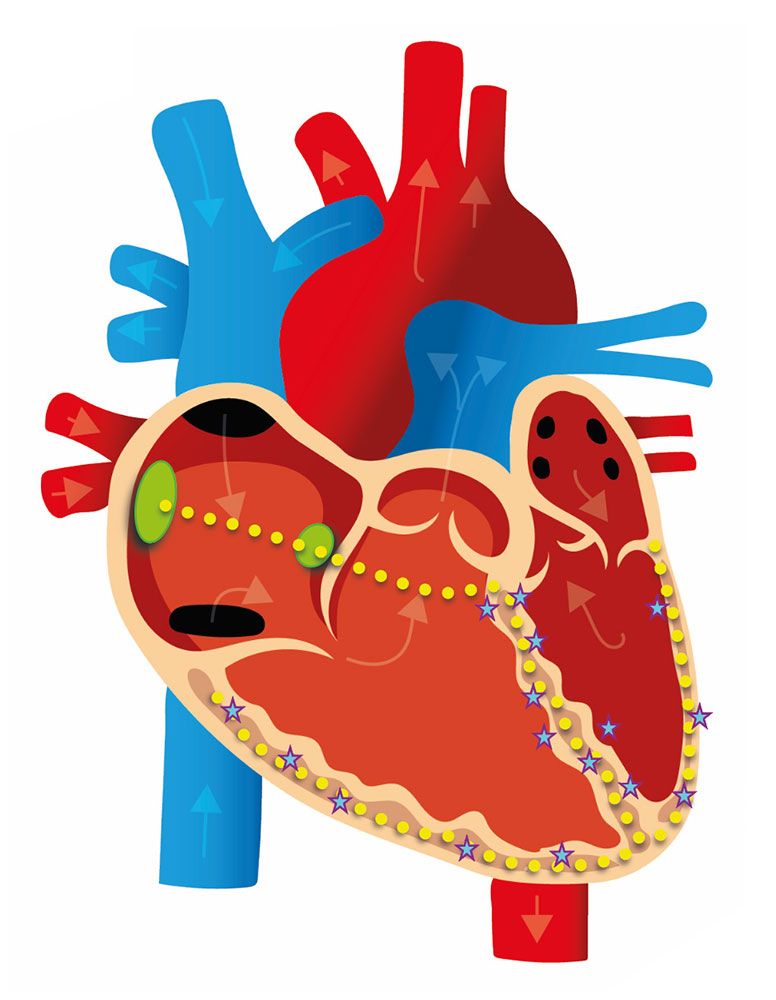
Ventricular Fibrillation (VF)

This abnormal electrical heart activity is called Ventricular Fibrillation (VF). If we consider that the organised pumping of the heart is similar to the “Mexican wave” at a football stadium, each individual spectator (heart cell) stands up and then sits down (contracts) at the correct time to generate the Mexican wave (blood pumping action).
In the case of VF, this could be compared to when your team scores a goal. Each individual supporter (heart cell) stands up cheers and waves their arms about wildly without any reference to anyone else. The result is no Mexican wave (NO blood pumping action) and the crowd just quiver in a disorganised, chaotic and uncoordinated way.
As soon as VF starts the casualty has no pulse and is in cardiac arrest, the blood supply to the heart stops, heart muscle ceases to function. Eventually irreparable damage to heart muscle.
- Base line wanders
- Each peak different shape and size, rapid rate
- Heart muscle action totally disorganised
- The heart does not pump out, and has trouble letting blood in
- VF is a ‘shockable’ rhythm
Potential to restore normal rhythm with use of an AED. No pumping = flatline = death.

 Quiz 1
Quiz 1
-
What is the aim of a defibrillator?
-
What is ventricular fibrillation (VF)?
When should a Defibrillator be used?
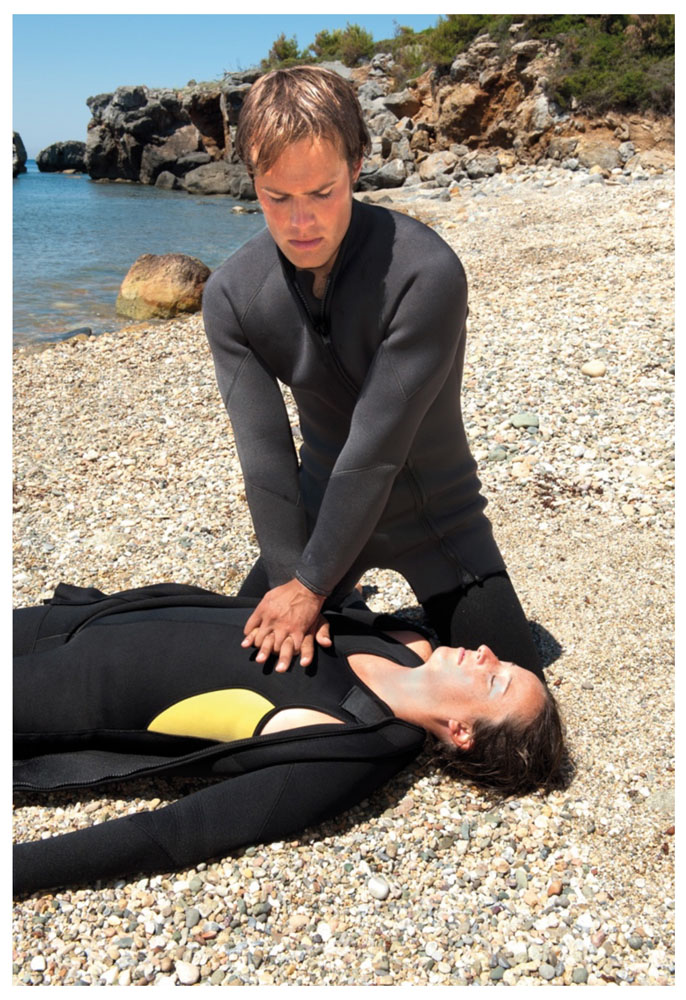
Usage
If an individual is showing signs of cardiac arrest or cardiac arrest is a medical emergency, the person will be unconscious, unresponsive and not breathing normally. An Automated External Defibrillator (AED) is designed to be used with little or no training.
How does a Defibrillator work?
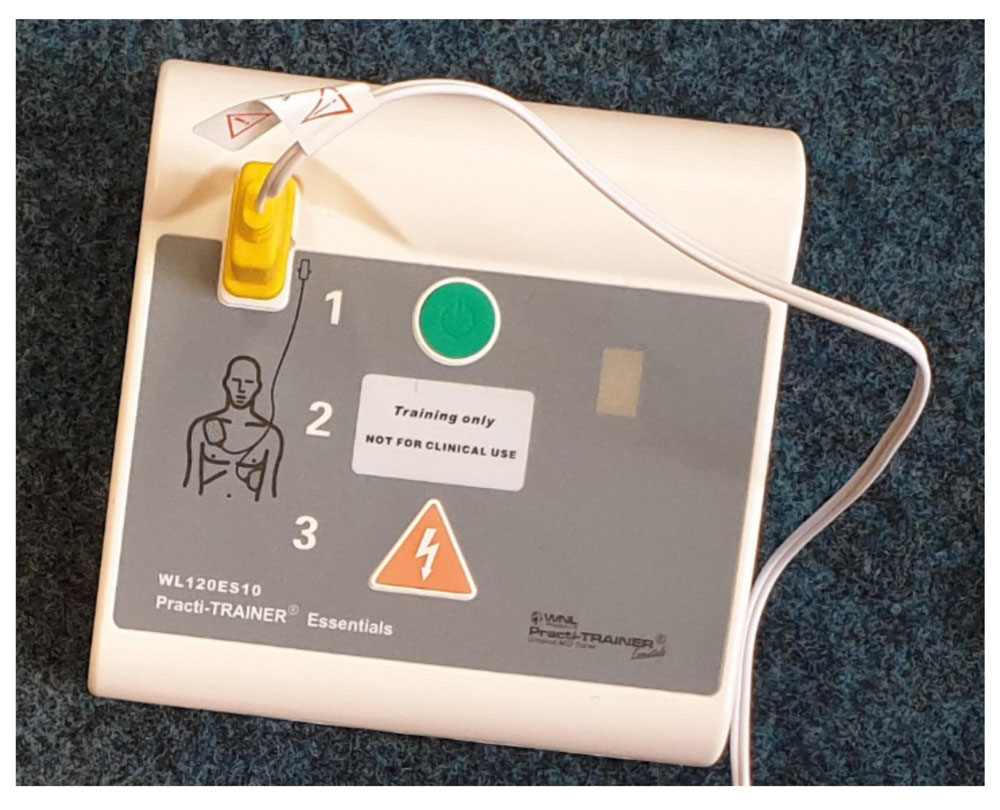
AED units for the lay person are designed for easy use. You simply turn the unit on and it will voice prompt you with step by step instructions.
Often there are very clear diagrams on the units and pads to help you use the AED. The pads must be placed correctly on the casualty’s chest and must be DRY and used on BARE skin.
The pads can be positioned whilst someone else is doing Basic Life Support (BLS).
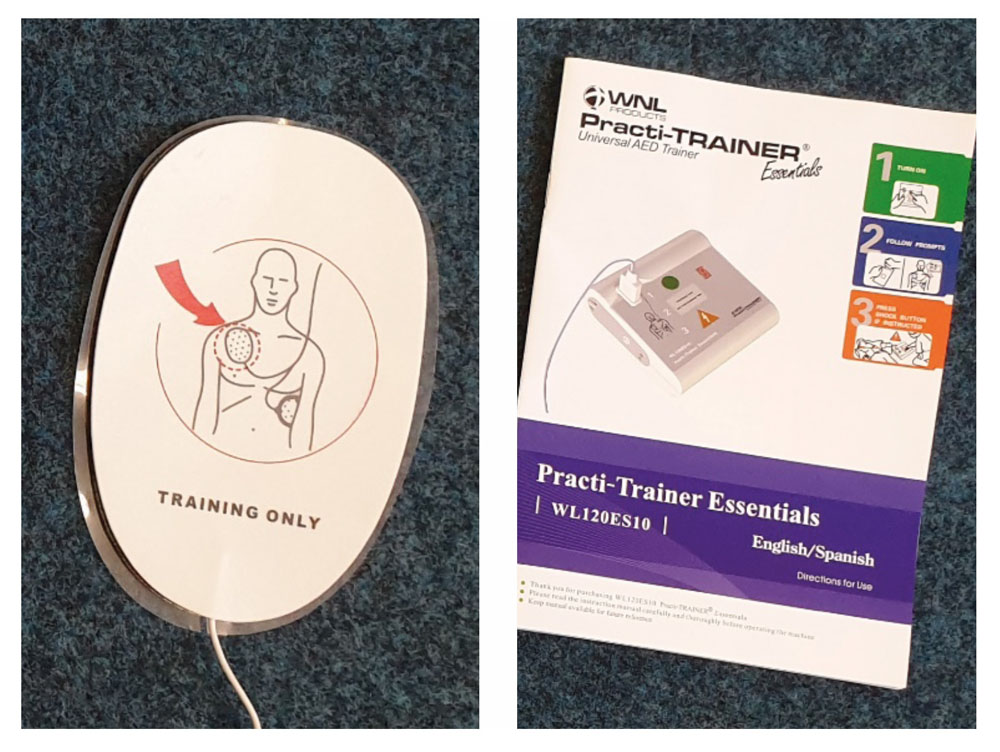
How does defibrillation work?
Defibrillation with an AED provides a brief high voltage electrical shock (less than 2,000 volts).
The electrical current passes through pads on the casualty’s chest and through the heart itself. The shock briefly stops disorganised electrical activity in the heart suffering from VF. This pause in electrical activity may allow the heart to restart and return to beating correctly with a normal sinus rhythm.
But this does not always happen, so further shocks are required. The defibrillator only works to correct fibrillation, so the machine will not deliver a shock if there is any other heart rhythm.
Pads correctly placed
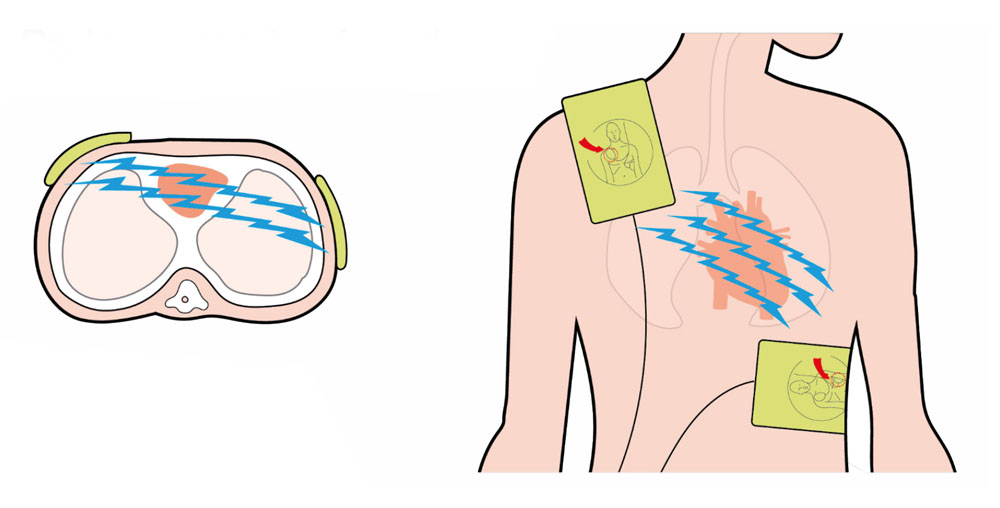
Sadly not everyone can be saved, even with defibrillation. However, the sooner defibrillation treatment is given, the more chance there is that the casualty will survive.
The AED
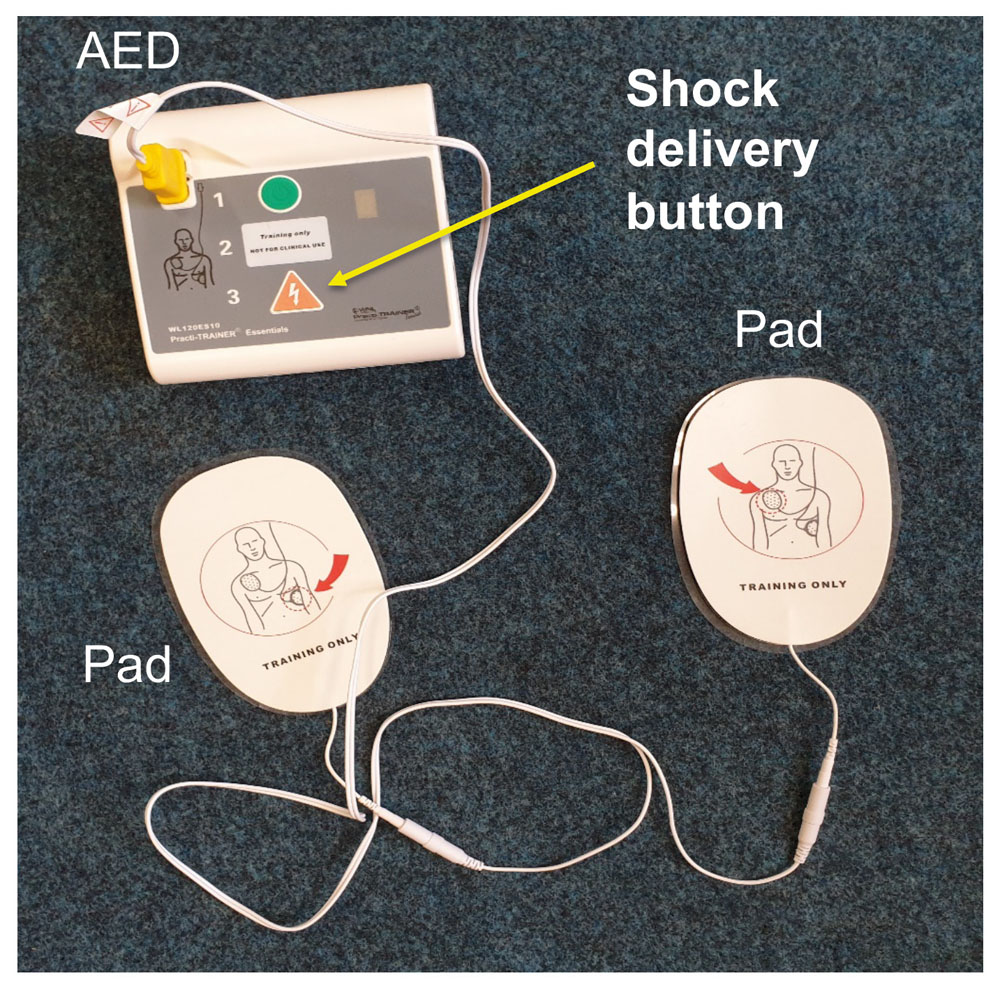
An Automated External Defibrillator gets its name from the following features:
Automated
Pads placed on the casualty’s chest detect the electrical activity of the heart. Complex electronics in the AED analyse the pattern of the electrical activity and look for abnormalities. If the AED detects VF then it can generate a high voltage shock. The machine will instruct the operator to administer the shock by pressing a button. It is not possible to deliver a shock if the AED has not detected a rhythm which requires a shock.
External
The pads are applied to the outside of the chest and the shock is delivered through the chest wall, therefore external to the body.
The machine is a defibrillator in that it is designed to stop fibrillation.
AED
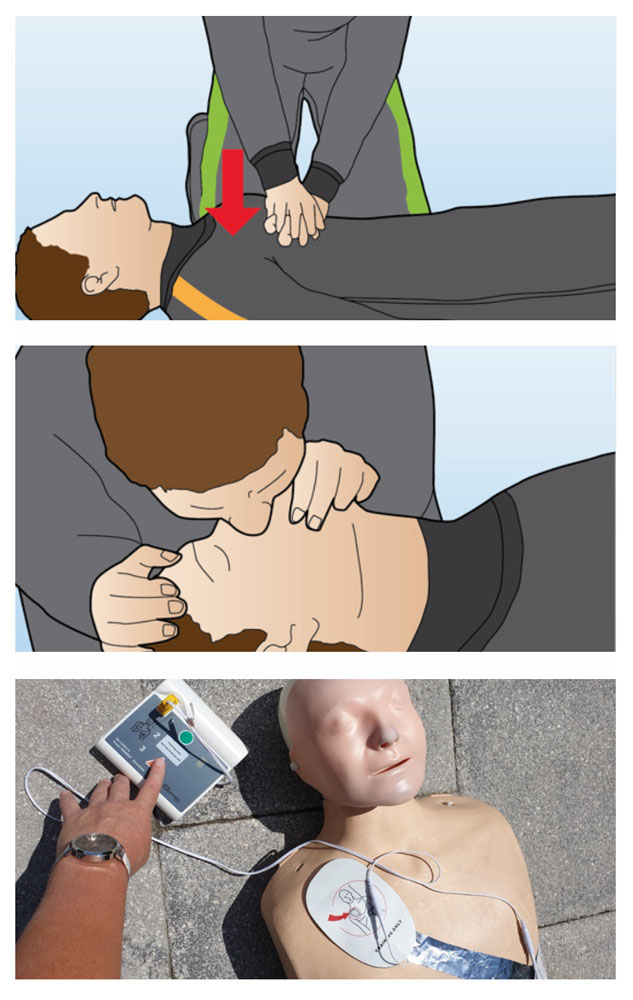
Procedure
- Switch on AED and place pads correctly as prompted
- Stop Chest Compressions (CC) and Rescue Breaths (RB) while AED analyses heart rhythm
- Results of analysis will be either SHOCK or NO SHOCK
- If required, press SHOCK button after machine charged ensuring no one is touching the casualty
- If not required, do not press the shock button but continue CC and RB
AED Protocol

AED and wet environments
AED usage
- There are 30 volts maximum at 15 cm (6 inches) from the patient
- May result in minor sensation (e.g., tingling)
- Not considered hazardous to operator
- Diving suits are insulators
AED should be maximum distance from casualty
The operator should place themselves and the AED as far from the casualty as the leads attached to the pads will allow.
There is little chance of a correctly maintained AED causing the administrator or bystanders harm, even if used in a wet environment.
Some leakage of charge is normal, but this should be of the order of 30 v at 15 cm from the patient, this might be enough to cause a minor tingle or other sensation, but this is not harmful. A diving suit will help aid insulation.
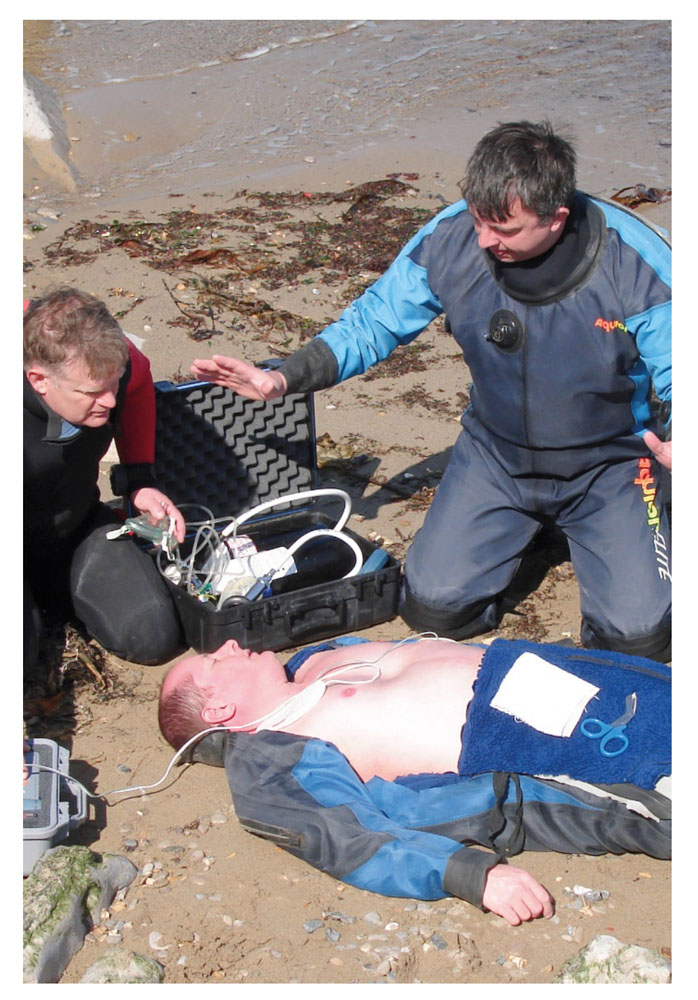
No one touching patient when shock delivered
This is important at all times but especially so in the damp environments of a dive boat or water’s edge. No-one should be touching the patient as the shock is given, which is why a check for such contact is made before pressing the shock delivery button.
Remove oxygen when shocking
Diving casualties may be being given oxygen. There is a risk that the electric shock may result in a spark and this has a risk of enhanced combustion of clothing, hair etc.
Turn off radio whilst analysing rhythm
Turning off transmitting radios will help the machine to analyse the current heart rate.
Other required equipment
For use generally and specifically in the diving environments additional equipment is required for the safe and effective use of an AED.
This equipment is additional to the AED
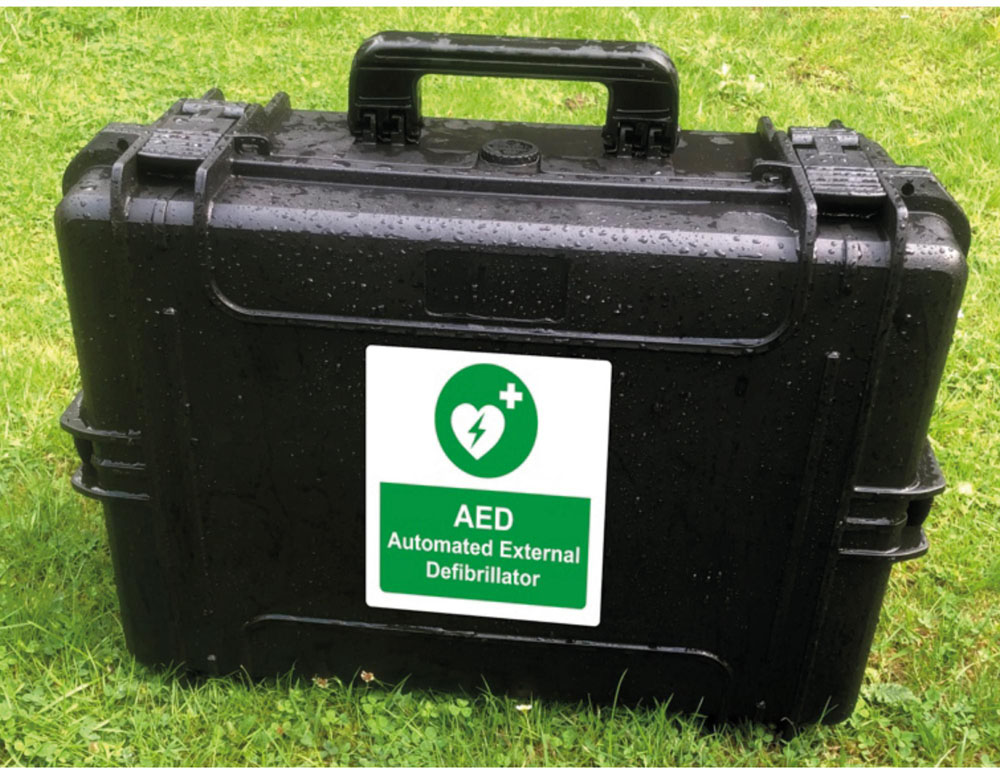
Robust, padded & waterproof case - Helps keep all the components of the unit, plus spares, and other items in one place, ready for immediate use.
Although the machine used in the course is fairly waterproof and resistant to damage, it will require storage in a robust waterproof case on a dive boat. This case needs to be clearly marked with the accepted sign for a defibrillator, and the machine should be readily accessible in the event of an emergency.
Training machines and materials should be clearly marked and stored separately so as not to be confused with operational machines.
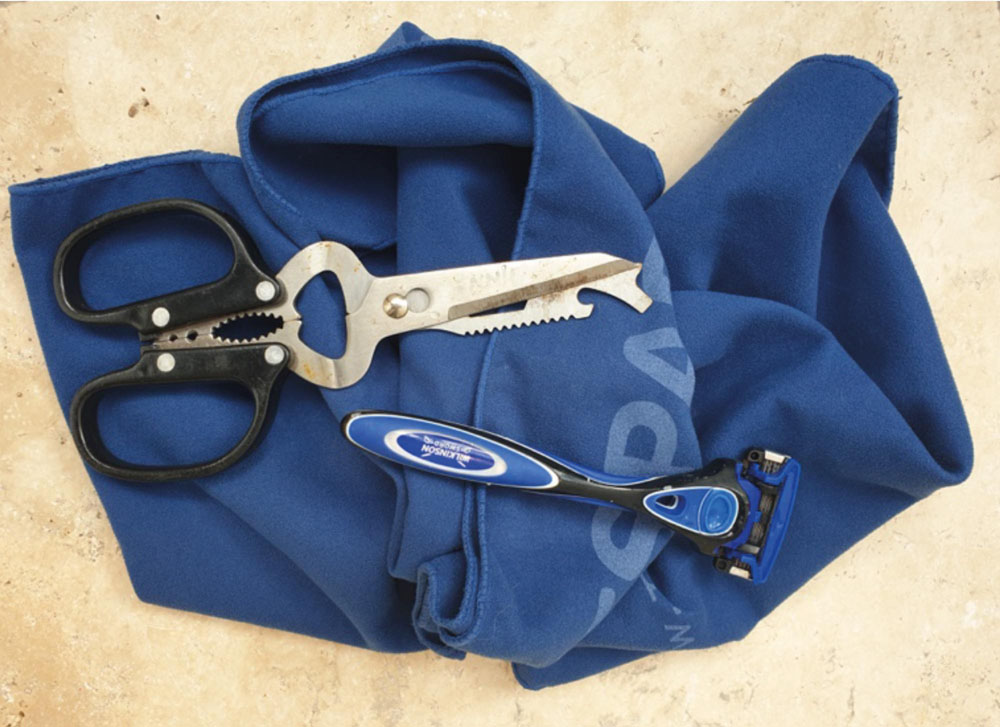
Safety shears to cut diving clothing - The pads must be applied to the casualty’s bare chest and it is necessary to remove the diving suit and undergarments quickly and effectively. Strong scissors or Paramedic shears are cheap, are unlikely to rust, and will cut through any dry suit, as well as all other clothing.
Cloth to dry casualty’s chest - Sometimes the patient’s skin is sweaty, which prevents the adhesive pads sticking properly. On occasion, the patient may have been removed from a watery environment. Damp chest skin spreads the electrical charge out across the chest, reducing its effectiveness inside the chest where it is needed.
Razor to shave chest hair if needed - The pads must be closely applied to the skin and large amounts of body hair may prevent a good electrical contact. If this seems likely, the hair should be quickly shaved and a razor is necessary for this.

Quiz 2
- When should a Defibrillator be used?
- Where should the AED be placed in a wet environment when being used?
Evidence

Because the heart is without a blood supply while the rhythm is VF, every minute that the heart is not beating lowers the chances of survival by approximately 10%. BLS is not fully effective at keeping the heart and other organs alive, and ultimately VF requires a shock from a defibrillator to restore a normal heart rhythm.
The time to delivery of the first shock makes a crucial difference to the potential survival of the patient.
Therefore speed is of the essence
Placing AED devices in public places such as supermarkets, libraries, parks, etc., aims to reduce the time to get an AED to the patient, without waiting for the ambulance service to arrive.
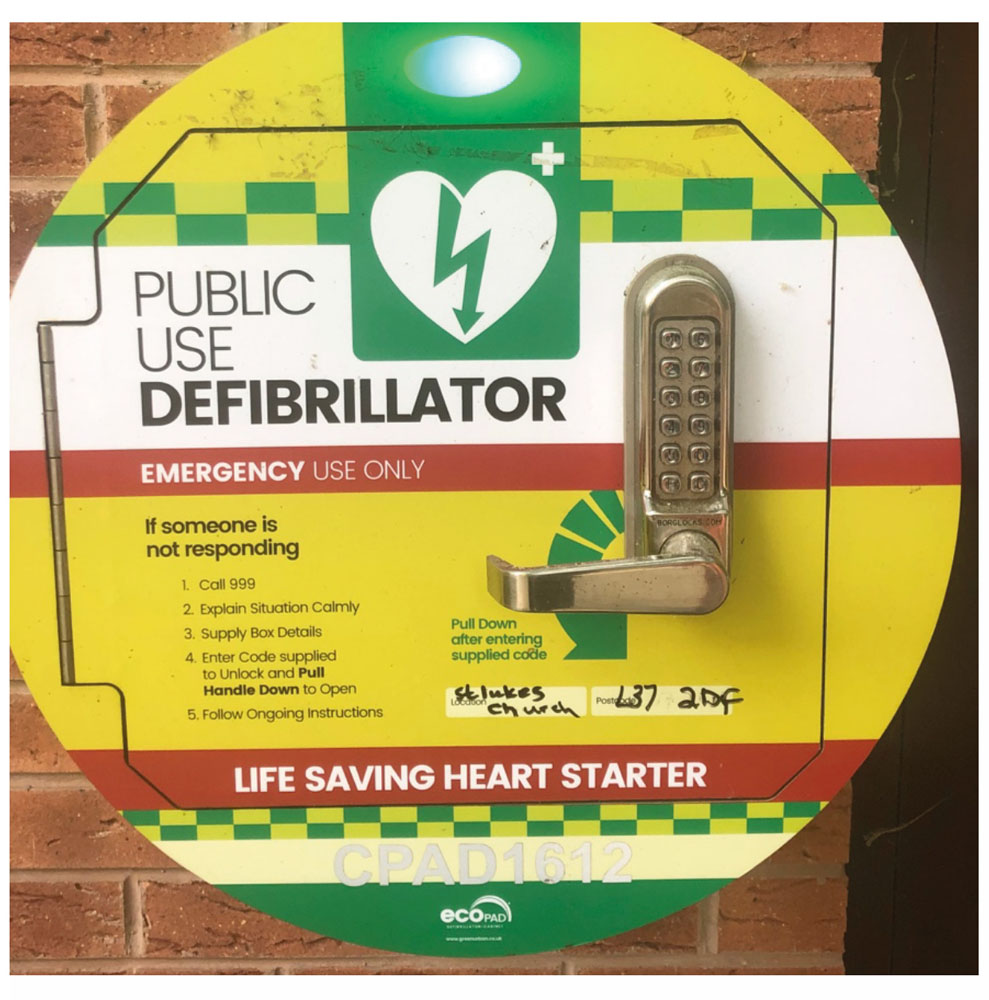
Success rate
The data below has come from an abstract paper from New England Journal of Medicine in America. They studied a prospective series of cases of sudden cardiac arrest in casinos. Casino security officers were instructed in the use of AED. The defibrillators were located so to be available to a user within a target interval of 3 minutes or less between diagnosis of cardiac arrest collapse to the first defibrillation.
148 individuals suffered cardiac arrests
105 in VF and treatable by AED (71%) 43 not in VF, untreatable by AED and did not survive (29%)
Of 105 shocked casualties
< 3 mins : 74% survived
> 3 mins : 49% survived
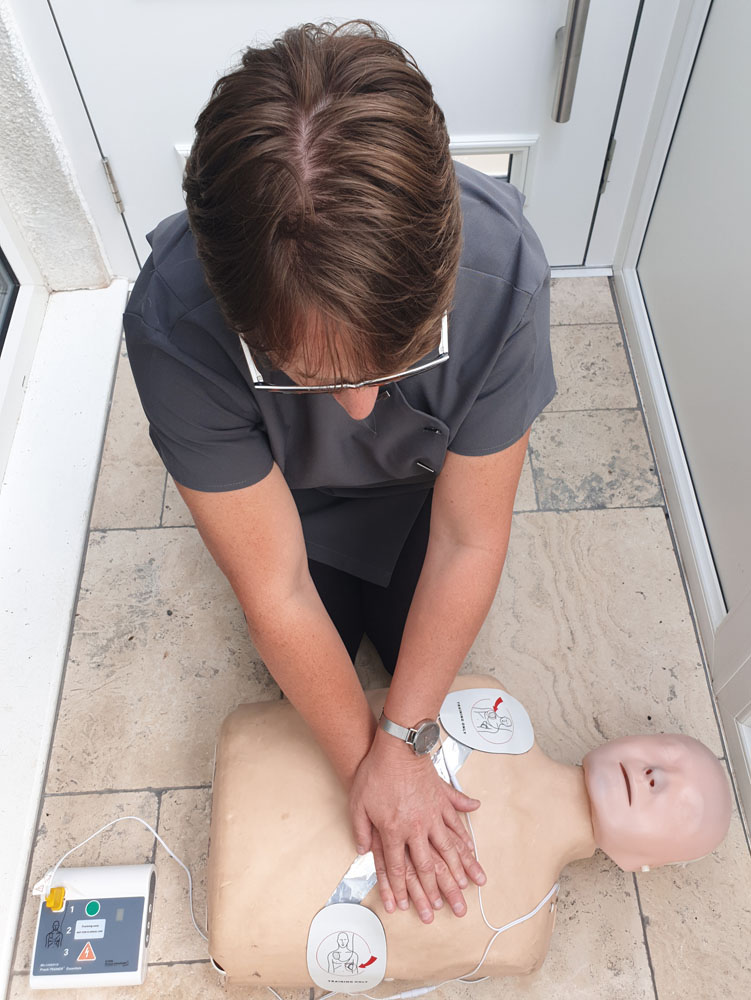
Most cardiac arrests may be treated using AED
Rapid response time is a critical factor in success rate
It’s not your fault if it doesn’t work!
How can I get a training AED?
BSAC shop
The BSAC shop will stock the Mini AED Trainer at a reasonable price for all Branches to purchase.
Training AEDs are also available to hire from BSAC HQ
Note: in a real live emergency where there is a cardiac arrest DO NOT use a training AED.
Real AEDs can be sourced with advice and research. BSAC HQ happy to advise.
When considering an AED it is very important to consider its suitability to the sports diving environment. The BSAC does not recommend any particular AED from any specific supplier. However, it is important that any unit chosen by members is suitable for use in the sports diving environment.
 Quiz 3
Quiz 3
-
For every minute defibrillation is delayed the victim’s survival rate decreases by?
-
How can I get a training AED?
Summary
This workshop has enabled you to be more aware of the following
-
What isa defibrillator?
-
The heart and how it works
-
When should a defibrillator be used?
-
How does a defibrillator work?
-
Success rate
-
How can I get hold of either a training AED or a real one?
Note
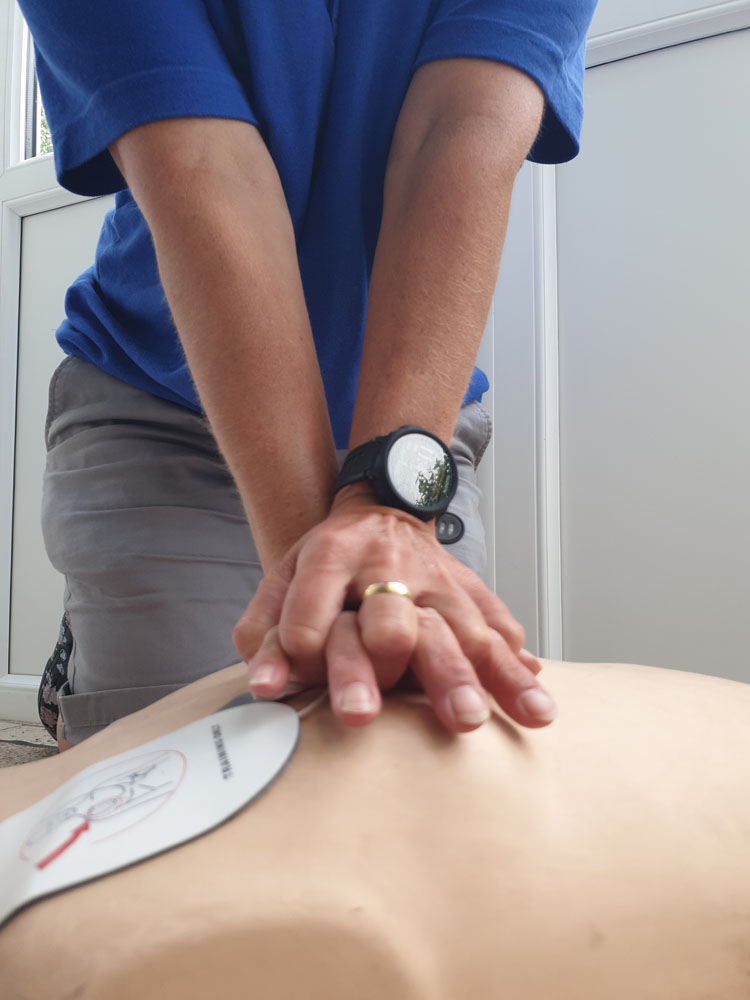
This workshop has enabled you to successfully be able to deliver the components of AED training in the Sports Diver syllabus.
We hope that this awareness course has provided you with a greater understanding and confidence in the use of an AED.
THIS IS AN AWARENESS COURSE ONLY – WE RECOMMEND YOU ATTEND A FULL THEORY AND PRACTICAL AED COURSE
Mini AED Trainer XFT-D0009
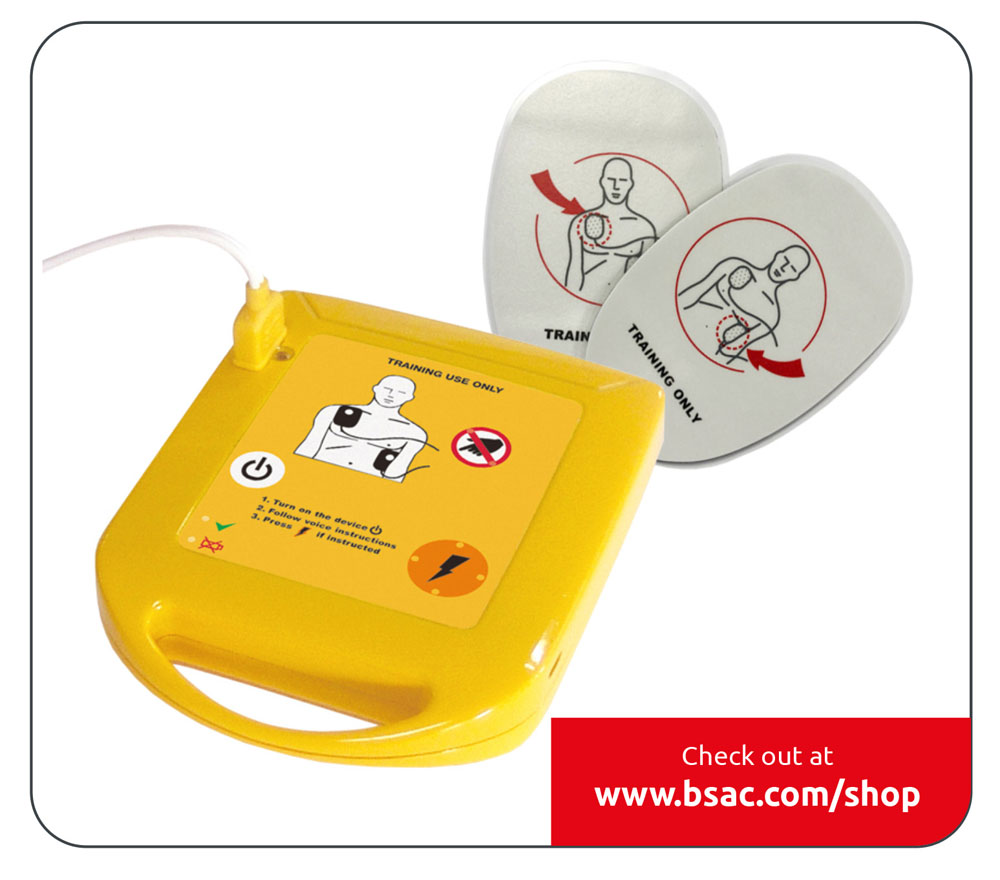
The innovative Mini AED Trainer accurately simulates defibrillation without administering a live shock, making it ideal for teaching learners basic AED skills. With its visual and verbal prompts, this compact AED trainer helps learners understand how to safety use a defibrillator in an emergency situation.
Key features include:
-
Compact and easy to use
-
Adult training pads with pad connector included
-
Visual and verbal prompts guide the user through safe CPR and defibrillation
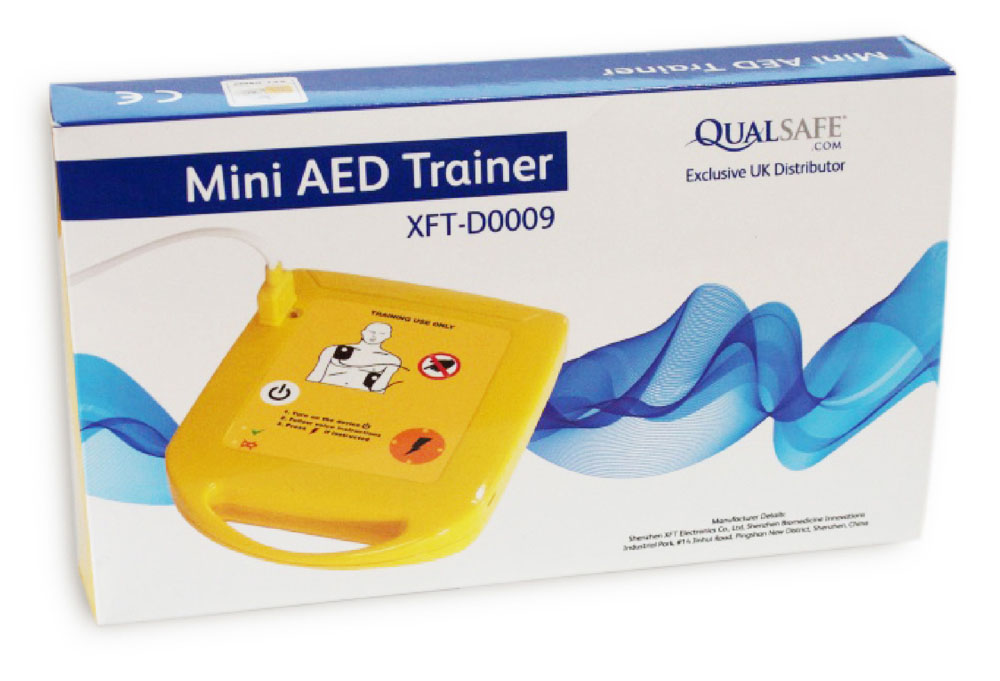
www.bsac.com/shop
Contents
-
1 x AED Trainer Unit
-
2 x AAA Batteries
-
1 x Pad Connector
-
1 x Set Adult AED Trainer Pads
-
1 x Instruction Manual
Specification
-
Total Size: 100mm x 80mm x 18mm
-
Powered by 2 AAA Batteries (DC3.0V)
-
Shutdown Current:
-
Maximum Operating Current:
-
Language: English
Test yourself answers
Quiz 1
-
What is the aim of a defibrillator?
It aims to return the heart to a normal rhythm -
What is ventricular fibrillation (VF)?
Uncontrolled electrical activity in ventricles
Quiz 2
-
When should a Defibrillator be used?
The person will be unconscious, unresponsive and not breathing normally -
Where should the AED be placed in a wet environment when being used?
AED should be maximum distance from casualty
Quiz 3
-
For every minute defibrillation is delayed the victim’s survival rate decreases by?
10% -
How can I get a training AED?
From the BSAC shop or I can hire one from BSAC HQ
If you are confident, you can now take the real theory module exam in AEDA1 End of module exam. Remember you will need 4 out 5 answers to pass. If you succeed you will see the module signed off in your ‘MyBSAC’ area on the BSAC website.
Exam time
Welcome to your end of module exam.
- You have a maximum of 5 minutes to do your multiple choice exam.
- To pass the exam you must get 4 out of 5 questions correct.
Good luck

